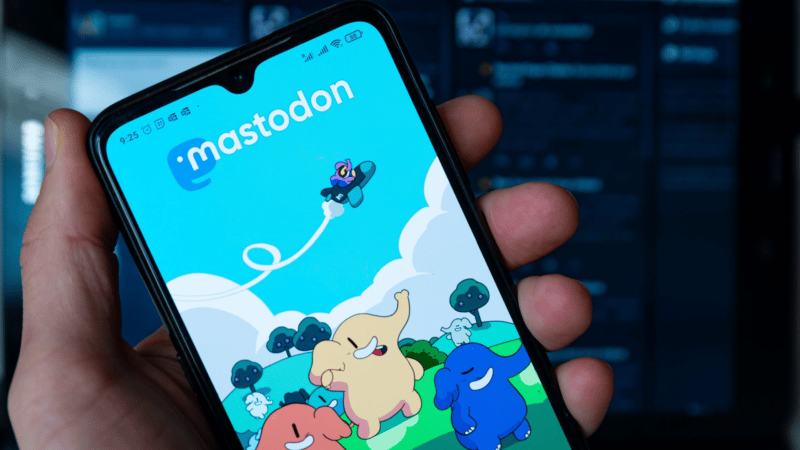Mastodon: The new way to connect with other SEO pros
Here’s what search marketers need to know about joining Mastodon, along with tips for getting started and participating in discussions.
With the recent developments on Twitter, you may have heard about Mastodon in the news. Perhaps you’ve already joined to protest or find an alternative.
Although you can use Mastodon as an alternative to Twitter, there is no such requirement.
This article will discuss how digital marketers can join Mastodon, what to expect, and how to use it. I will also highlight a few tips to make it easier for you to absorb the flow of information in Mastodon.
What is Mastodon?
Mastodon describes itself as a “free, open-source decentralized social media platform.”
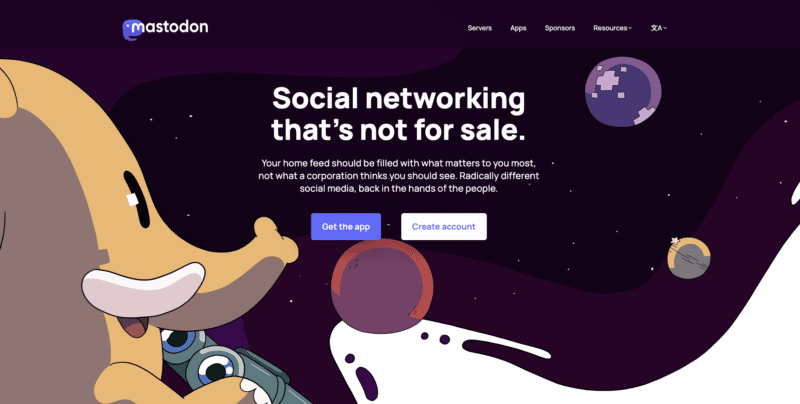
It has microblogging features like Twitter but on a decentralized infrastructure named the fediverse (or federated universe). Although it sounds very much like Web3, it is only similar and not exactly the same.
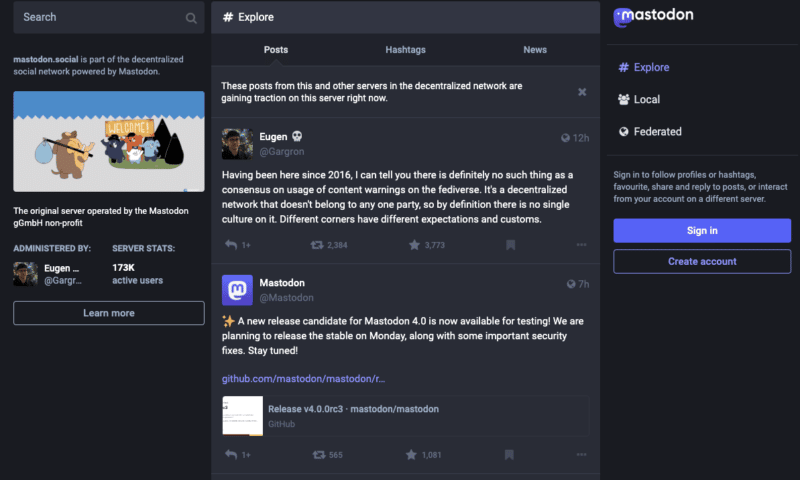
Mastodon is free for the average user, but as always things are a bit more complicated which I will elaborate on below.
Tip: If you decide to leave Twitter for Mastodon (for whatever reason), do not delete your account. Instead, keep your Twitter account and set it private, to prevent bad actors from claiming your old Twitter handle and pretending to be you.
Is it worth joining?
The answer depends on your personal situation – but think about it.
If you (or your company) are already present on Twitter or other SEO-related communities in Reddit, Slack, Facebook, LinkedIn and Google Search Central Help Community, then why not join Mastodon and establish a presence there?
On Mastodon, like all other discussion platforms, SEOs gather and discuss search marketing-related topics. You don’t need to participate, but you are free to join.
Many SEOs are already there, including Googlers like John Mueller, Danny Sullivan, Lizzi Sassman, Gary Illyes, and Martin Splitt. In other words, you will likely hear more about things that were said on Mastodon in the future.
How do I join?
Before getting started, it is important to understand how decentralized microblogging works.
Simply put, instead of having one entity (e.g., Facebook or Twitter) running all the servers and controlling all data, anyone can set up a server to host Mastodon for themselves, exclusively for their organizations, or for others to join.
Because of this decentralized nature, as opposed to having a handle similar to Twitter (i.e., @username), your Mastodon handle must include a server hostname (e.g., domain name) and will look like this:
@[email protected]
For comparison:
- My Twitter handle is
@filiwiese. - While my Mastodon handle is
@[email protected], whereas:@filiis the username.@seo.chatis the server hostname.
The server name becomes part of your identity. That said, it is important to note that you can freely switch between servers while redirecting older handles to the new handle on the new server.
An important principle of Mastodon is that you are in charge of your data. Your content will be indexable for search engines on the public website of the server you choose.
Your Mastodon profile URL will look like this:
https://server-name/@username
(Or in my case: https://seo.chat/@fili)
Again, [server-name] is the hostname of the Mastodon server you joined.
Often, when you click on profile links, you may end up on the user profile, instead of the handle.
You can see the handle displayed under the username on the profile.
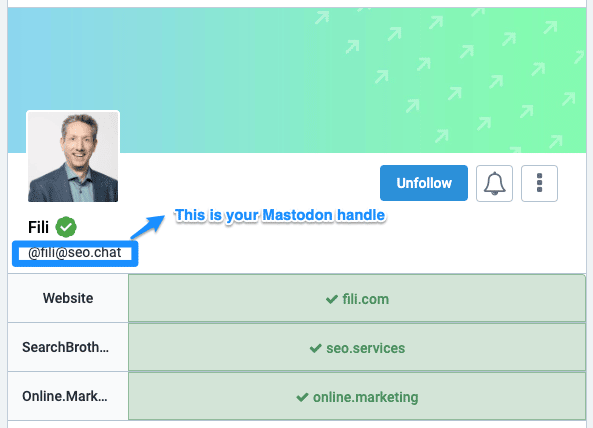
You can use handles to follow users if you are not on the same Mastodon server. Just copy the handle and paste it into the search box within the Mastodon apps.
Where do I join?
You can choose to host your own server on your own domain, so your handle includes your own branding. Search for “Mastodon hosting” to find a managed host you like.
Note that due to the current situation, a lot of managed Mastodon hosting providers do not accept any new clients at the moment as they are processing a backlog and improving their infrastructure.
Alternatively, you can join an existing server. Often, you may need to apply for membership. This is to reduce spam and prevent servers from unexpectedly overloading due to the increased demand.
Mastodon is seeing a huge influx of new users so it may be challenging to find a good server to join. There are a few rapidly growing, dedicated and popular SEO community servers already up and running.
If you want to forgo the trouble of setting up your own Mastodon server (even if just for the time being), you can join one of the following SEO community servers (free of charge):
• SEO.chat
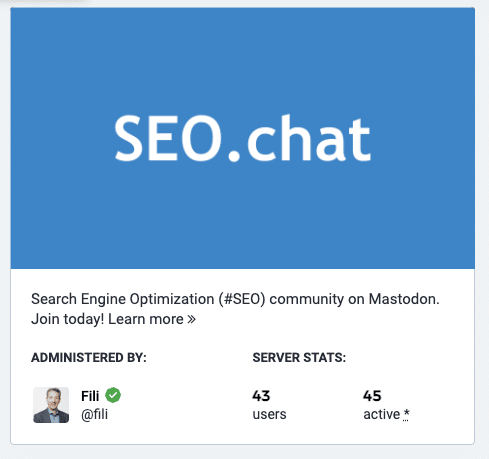
• SEOcommunity.social
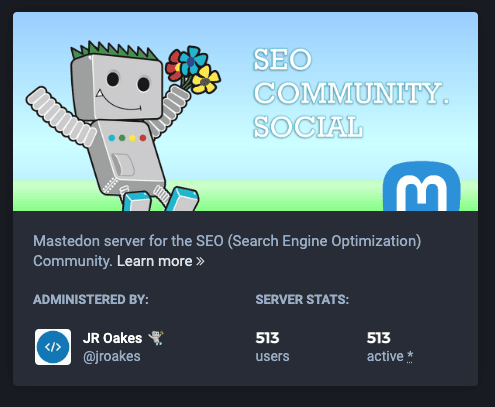
• seommunity.com (Spanish-language focused)
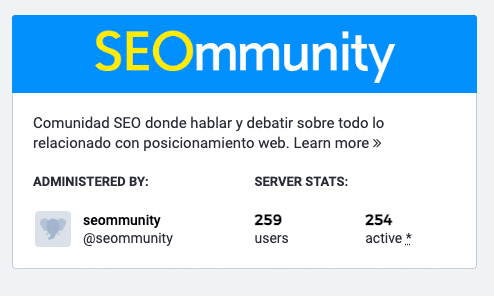
You can join any other Mastodon server and still participate in the SEO discussions.
I recommend choosing a server name that is short and memorable, something you can identify with. As mentioned, it becomes part of your online Mastodon identity.
Note: You do not need to select the most popular Mastodon server to discuss SEO. It does not matter which server you use to access and be active on the Mastodon network. Just choose a server with a name that you can easily type.
If you join an existing Mastodon server, be sure to read the community rules (this is important!).
When possible, donate to your server admin as they pay for all the traffic and services associated with your Mastodon handle and activity, often out of their own pocket.
Get the daily newsletter search marketers rely on.
See terms.
Anything else I need to know about Mastodon?
Once you’ve joined Mastodon, there is a couple of quick facts to know. Here are a few:
- There are no ads.
- You can move from any server at any time, you are in control of your data.
- You need to follow people to see content from your peers.
- Using lists is recommended.
- There are custom emojis, depending on each server’s settings.
- The home feed is a firehose, where you easily go down the rabbit hole and can get lost.
- Direct messages are not encrypted (unlike Twitter) and are not really private (due to the decentralized nature of the network). Use email instead, preferably with Pretty Good Privacy (PGP) for real privacy.
- Posts are referred to as “toots.”
- Mastodon is not the same as Twitter, nor is it meant to replace Twitter.
Due to the lack of commercial intent (e.g., promoting content for a fee and/or ads) and the implementation of community moderation rules to which users must adhere (to avoid being banned from their respective servers), the overall experience of many digital marketers on Mastodon has been:
- “Refreshing.”
- "[L]ike starting over without all the noise."
- “[T]alk[ing] about the real stuff again without being swamped with promotional content.”
I just joined, so how do I participate in SEO discussions?
Hashtags are everything
Mastodon is a bit different from Twitter in terms of discussions. If you don’t hash it, most people will not see it.
It may pop up in the home feed of people following you, but so will many other “toots.” If you want to be visible and participate in discussions, hash everything you post on Mastodon!
Follow fellow SEOs
Next, get started with following SEO peeps who are on the platform. You can download the list of SEOs on Mastodon maintained by Jon Henshaw. Follow the instructions to import the list into your Mastodon account.
Customize the user interface
When you log into the server of your choice, by default you will have an interface similar to other microblogging platforms.
That said, you have an option in the account settings to display the advanced web interface. For marketers and power users, this is an ideal interface as it is loaded as a PWA in your browser and looks pretty similar to Tweetdeck.
In the advanced interface, you can create columns – including searches.
An interesting option is to combine multiple searches into one column.
- First, search for one hashtag (e.g., #seo) and then pin this search.
- Next, go to the settings of this pinned search (in the upper right corner) and select “Include additional tags for this column.”
- Lastly, add any additional hashtags to the search “Any of these” (e.g., #google and #search).
- Now the column includes posts for all three hashtags combined.
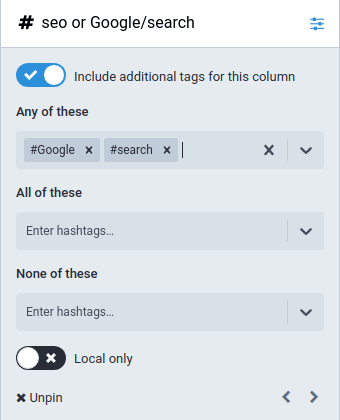
Monitor hashtags
Finally, I have to reemphasize:
- Checking and monitoring the #SEO hashtag is important to participate in SEO discussions on Mastodon.
- So is tagging your own SEO-related posts.
A few more (fedi)tips
Becoming a Mastodon master
While getting used to the platform and posting messages, keep an eye out for posts with the #feditips hashtag.
These posts will assist you in getting better at using Mastodon to its full potential.
Management apps
Although there are a number of different (mobile) apps, there are not many advanced apps available for managing many accounts with scheduling and planning functionality built-in.
But as adoption grows, I suspect that a number of popular social media management tools will extend their services to include Mastodon.
If they haven't yet and you want them to, ping them and ask them to do so. Often they just need a little push.
In the meantime, for the geeks among us, there is an API you can utilize and many libraries are available in different programming languages such as Python that you can use to programmatically plan and schedule your own posts.
Verifying identities
Unlike Twitter, you do not need to pay to verify. Actually, you self-verify.
To do so, you need to add your websites to your Mastodon account and add a link back to your profile from your (company’s) website, as a link: rel="me"
<a href="https://searchengineland.com/your-profile-url" rel="me" >Mastodon</a>
Or as a link element in the HTML head:
<link href="your-profile-url" rel="me" />
This will turn the link in your profile green with a little tick, to confirm that you have verified your identity.
In addition, John Mueller wrote two great scribbles about:
- How to make yourself findable on Mastodon based on your email address. This does require that you have access to your website to make the necessary changes.
- How to create static embeddable social posts on Hugo (which, of course, can be adapted for any other platform).
Custom emojis
Depending on the server you join, you can use different custom emojis. These are loaded as shortcodes like:
- :code:
When categorized, they are also available in the emoji selection menu.

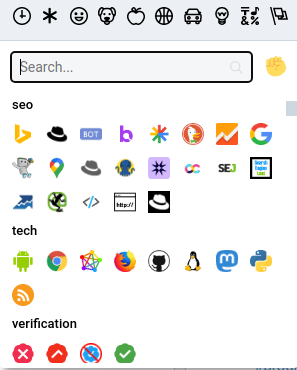
Is that all?
No. There is so much more about Mastodon and this article just scratches the surface.
It reminds me very much of Twitter and microblogging in the early days.
So, should I join?
Why not?
As a digital marketer, embrace the opportunity to experiment with a new communication channel and learn about decentralized platforms.
Will it replace everything on Twitter? Probably not.
Does that mean it is a waste of time? Probably not, because some people (and their conversations) will be on Mastodon only and/or primarily.
Don’t miss out and join today.
Opinions expressed in this article are those of the guest author and not necessarily Search Engine Land. Staff authors are listed here.
Related Stories
New on Search Engine Land
Mastodon: The new way to connect with other SEO pros
New report shows Google cost per lead has increased for 91% of industries
Why is content marketing important? 9 reasons to use content
TikTok has launched an in-app ecommerce feature
The SEO career path: What it may look like and how to level up


